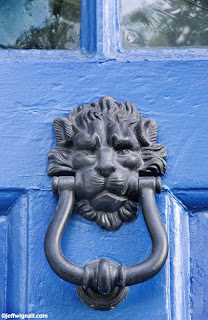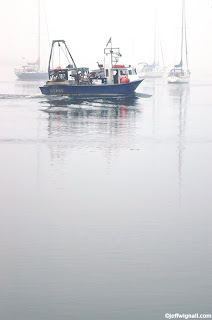 This weekend I had the great pleasure to see the new film Julie & Julia that is based on two true stories--one is the life story of Julia Child (based on her book My Life in France) and the other is based on writer Julie Powell's book Julie and Julia. Without giving away much of the plot, Powell's half of the story is about her attempt to cook every recipe in Child's Mastering the Art of French Cooking and then blog each day about her successes and failures. Since there were more than 500 recipes in Child's book, it meant that she had to cook more than a recipe a day for a full year. It's a wonderful movie and both Meryl Streep (Child) and Amy Adams (Powell) are fantastic.
This weekend I had the great pleasure to see the new film Julie & Julia that is based on two true stories--one is the life story of Julia Child (based on her book My Life in France) and the other is based on writer Julie Powell's book Julie and Julia. Without giving away much of the plot, Powell's half of the story is about her attempt to cook every recipe in Child's Mastering the Art of French Cooking and then blog each day about her successes and failures. Since there were more than 500 recipes in Child's book, it meant that she had to cook more than a recipe a day for a full year. It's a wonderful movie and both Meryl Streep (Child) and Amy Adams (Powell) are fantastic.The idea of Powell cooking a new recipe (or more) every day got me thinking about how important it is to push your creative photographic boundaries every single day by forcing yourself to take new pictures each day. The incredible thing about having a goal like that and having the discipline to follow through is that you never know where it will lead. Powell could hardly have dreamed when she started her cooking project and blog (as a way to give meaning to her life and create an emotional release from her job) that one day it would not only turn into a major motion picture, but also that it would forever bind her life to Julia Child's. Amazing.
Creating a daily chore for yourself (especially doing it in public) is not easy--as I can tell you firsthand, since I've tried as best I could to create this blog on a daily basis for nearly 10 months now. I've allowed myself gaps of a week here and there partly because I've got to take assignments to feed myself (and the cats) but also partly because I'm not Julie Powell. In light of what I've been trying to do here every day (and giving myself the luxury of days off when I need them), her accomplishment seems all the more staggering to me.
I have tried shooting new pictures for this blog at least several days a week and even that's not easy. Inspired by the movie, however, I decided to try to increase my daily photo output--and I started today. As I headed out to run some errands I decided to bring my cameras with me and not come home without a new photo. The picture above is the result of my effort today--a door knocker I found on the front door of the local historical society (a building I've driven by a thousand times and never noticed the lion's head before). It was an interesting little game of inner psychology because I actually did find a photo subject that I really liked--and had I not pushed myself to find a new photo, I never would have found it.
A lot of people have beat me to this "picture-a-day" idea and, in fact, one of the more interesting ideas that is showing up in photo blogs these days is that very concept--taking a new picture every single day. And what a great idea. Your imagination is like a muscle, and as they say in the muscle-building world (a world with which, happily, I have no contact), "...use it or lose it." From a creativity standpoint, forcing yourself to come up with new photo ideas generates more ideas and those ideas create a self-perpetuating energy that feeds on itself. It also forces you, at least once a day, to think (if only for a moment) about photography. Check out Kate's Picture a Day if you want to see a great example of a daily picture blog.
Do you think you have the right stuff to pull this idea off? Try it. The photos don't have to be museum quality works of art--just a new picture of a new subject shot each and every day. And if you want to try to do it with the world watching, you can get a Google blog for free and share your daily photos with the world. And maybe one day they'll make a movie out of your blog!


















